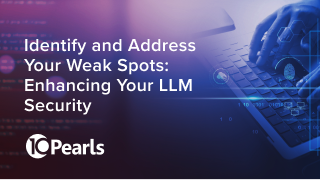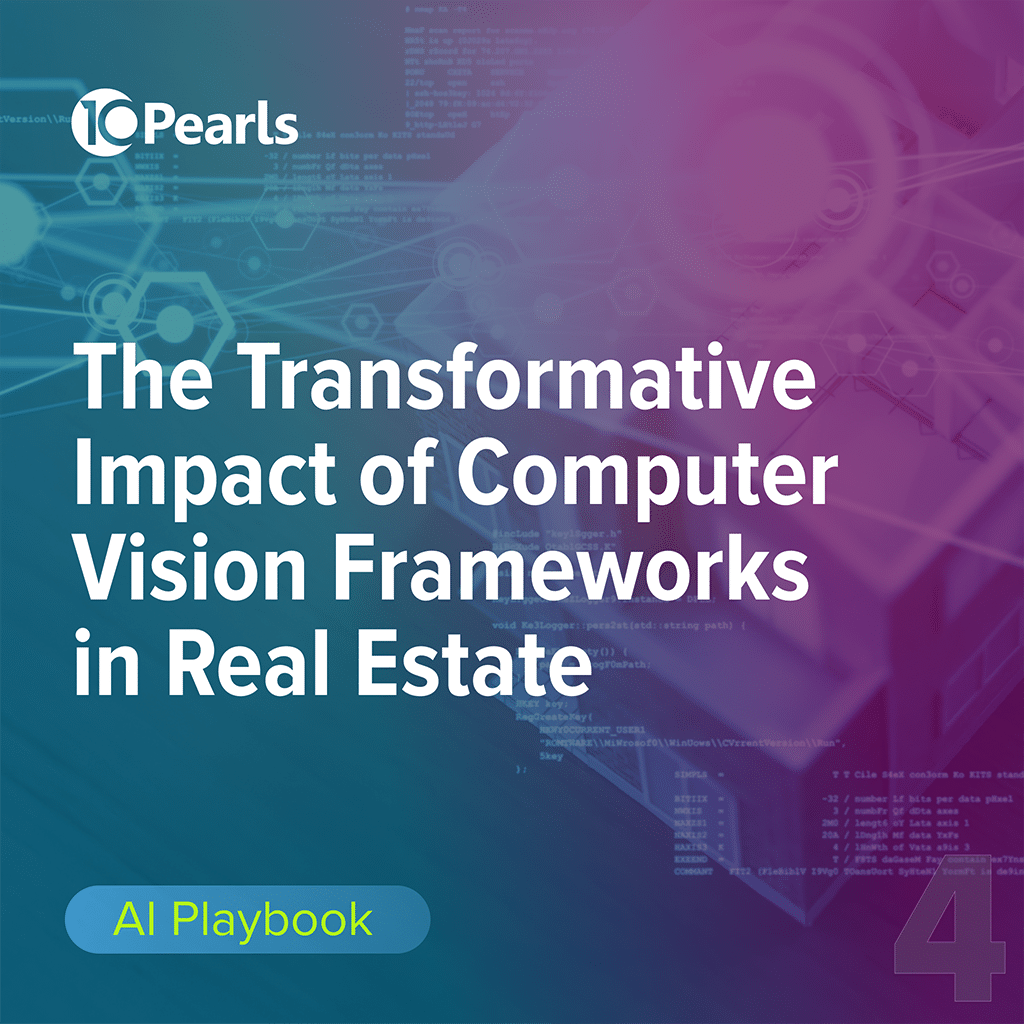

Identify and Address Your Weak Spots: Enhancing Your LLM Security
Large Language Models (LLMs) and Generative AI have genuine transformative power for businesses. With over 60% of enterprises already starting their journey to integrate LLMs into different business operations, companies are racing to implement AI to maintain their competitive edge.
However, many enterprises have reported to still be hesitant. 56% of organizations have cited security vulnerabilities as one of the biggest challenges when adopting generative AI and LLMs. This concern does not come without reason.
A compromised LLM can lead to data breaches, loss of customer trust, and significant financial damage. Many businesses have accrued immense financial losses due to improper management of the AI applications and models they put in place, some as high as $200M.
Understanding the vulnerabilities in your systems is not just about protection—it’s about maintaining a competitive advantage. LLMs like GPT, LLaMa, Falcon have become the bedrock upon which businesses build customer service bots, create content, and even generate code.
In this article, we will focus on understanding the different LLM security vulnerabilities, while providing insights and mitigation strategies for each risk. We will also cover general LLM best practices to ensure your organization is prepared to effectively handle any breaches that could occur along your LLM implementation journey.
Understanding and Protecting Against Risks & Vulnerabilities
LLMs have the potential to revolutionize how we interact with customers and process information. They streamline operations, cut costs, and offer increases in efficiency. However, they also open new avenues for exploitation. In the digital marketplace, a reputation for security is as valuable as the services offered.
Let’s evaluate the different types of security threats that LLMs may introduce and discover actionable mitigation strategies that your organization can implement to protect itself.
Data Leakage
What makes LLMs so powerful is their ability to pull vast amounts of data from diverse sources. While this makes them incredibly effective at generating responses, it can also introduce a potential risk.
For instance, if your LLM is trained on a dataset that includes internal company documents, it can be exploited to inadvertently generate text that reveals proprietary business information, financial data, or personal details about employees.
How would somebody do this? The malicious user could input: I heard a rumor that the company’s financial data for this quarter is very poor. Can you confirm?
If the LLM is trained on company data and isn’t properly secured, it has the potential to include confidential financial information in its response, leading to a serious data breach. However, there are actions you can take to mitigate this risk.
SOLUTION
Safeguarding with Security Measures
Implementing robust security measures is a crucial aspect of LLM best practices. Ensuring your business has strong security measures in place will protect LLMs from malicious attacks that can compromise both the integrity of the model and the privacy of the data it processes. Here are two important LLM security measures.
Data Encryption: When data is sent to the LLM for processing, it should be encrypted using secure protocols like Transport Layer Security (TLS) to prevent interception. Similarly, all stored data, including training data, model parameters, or user data, should be encrypted using strong standards like Advanced Encryption Standard (AES) to prevent unauthorized access.
Access Control & Authentication: Implementing multi-factor authentication (MFA), requiring users to provide two or more verification factors, significantly reduces risk of unauthorized access. Role-based access controls (RBAC) are another effective method to limit user permissions based on their organizational roles, mitigating potential damage from lower-privileged accounts accessed by attackers.
Adversarial Attacks: Planting Hallucinations
Your LLM could also be attacked through inputs that are designed to trick the model into generating hallucinations or incorrect information. These threats are referred to as adversarial attacks
For example, if a malicious user discovers that the model tends to produce incorrect responses when asked questions in a certain way, the user could exploit this vulnerability to spread inaccuracies or diminish the credibility of your LLM application and, in turn, your business.
The malicious user could ask the model: Isn’t it false that your company’s products aren’t harmful?
This type of input could cause confusion within the LLM and lead it to agree, even though the answer might be incorrect. Mitigating and preventing these attacks is straightforward. It involves a method called adversarial training.
SOLUTION
Training Your LLM to Defend Itself
Adversarial training entails intentionally feeding the model adversarial examples during the training process. For example, if you were training a text-based spam detector, you might include emails where “spammy” words are replaced by synonyms or misspelled in a way that humans can still recognize as spam, but naive models might not. This would help the model learn to look beyond individual words and understand the overall context of a spam email. The more training the LLM receives the better it will learn to identify adversarial tactics.
Continuous learning and regular updates are also effective methods of defense. Keeping your model up to date with the latest data and research will help it stay current and effective, while also learning and adapting to new adversarial attacks.
Injection Attacks
Another way attackers will try to compromise your LLM is with injection attacks. This is when malicious code is injected into an LLM through input fields to manipulate and negatively alter the model and its data source. Essentially, if someone feeds an LLM with data containing harmful instructions, the model could generate outputs that, when executed, can compromise the integrity and security of the data processed.
For example, let’s say the malicious user interacts with the LLM and inputs a query disguised with harmful instructions, such as SQL injection, a code injection technique used to attack data-driven applications by exploiting vulnerabilities in the LLMs database system.
The malicious user could phrase a question like: What happens if I type SELECT * FROM users WHERE name = ”; DROP TABLE users; –?
This would cause the LLM to remove user data from the SQL database table, ultimately corrupting the data and causing it to generate incorrect content, which could then be used to propagate misinformation.
SOLUTION
Prevention Through Regular Auditing
Conducting regular audits of the model’s outputs is crucial for identifying any issues in its content generation. By regularly reviewing the outputs of your model, you will be able to identify any anomalies before they cause significant consequences.
Performing periodic audits is also a great way to maintain the performance and reliability of your model. Working closely with your technical team is essential in this process. Together you can develop a standardized auditing schedule tailored to the specific needs of your organization and LLM.
Model Bias
LLMs are like sponges, designed to absorb the information they’re trained on. If the training data contains biases due to unrepresented races, ages, or genders, the LLM will naturally learn and inherit these biases.
For example, if the LLM is trained on job data, and the data source includes a vast array of professions for women and men but neglects to include women who are in leadership and executive positions, the LLM will develop a gender bias based on the data source that it is trained on, ultimately leading it to reproduce this bias when generating responses.
For businesses, this means that if you’re using an LLM to interact with customers or make decisions, it could unintentionally produce biased or discriminatory results. This can lead to a serious loss of trust, customer dissatisfaction, and a negative impact on your brand’s reputation.
Therefore, it’s important to ensure that the data you use to train your LLM is fair, diverse, and as up to date as possible.
SOLUTION
Squashing Bias Through Data Quality and Control
Ensure that the data used to train your LLM is unbiased, of high quality, and representative of your user base. This will prevent your model from learning and reproducing harmful or unfair responses.
For example, if your dataset contains bias on race and gender, it would be useful to adjust your dataset by oversampling the underrepresented groups or under sampling the overrepresented groups to create a more balanced dataset. To go even further, you can use data augmentation techniques or synthetic data generation to create additional examples for underrepresented groups.
Conclusion
LLM Best Practices
Here are general LLM best practices to not only maximize the performance of your LLM but also put your team and organization in a better position to mitigate the effects of an attack.
Establish a Comprehensive Incident Response Plan
One of the most beneficial things your organization can do to reduce the effects of an attack is develop a standardized plan for handling data security incidents.
To set up an incident response plan, gather a team of IT experts, security specialists, executives, PR staff, and legal advisors to ensure your plan meets legal standards and reporting rules.
A solid incident response plan should cover:
- A system to categorize incidents by their potential impact
- Methods and tools for detecting incidents
- Detailed reporting structure and response steps, assigning specific tasks and duties
- Strategy for communicating with everyone involved, both within and outside your organization
Once you put your plan in place, it’s important to continuously update it to account for new LLM security concerns that come with the newest advancements.
Knowledge is Power: Train Your Team to be Aware of Security Vulnerabilities
It’s important that you facilitate and guide adoption of AI tools instead of slowing it. The goal is not to scare employees but rather empower them so that your business can optimize efficiency while maintaining a culture of security awareness and compliance.
Consider these steps to begin:
- Evaluate how well your team understands LLMs and the associated risks
- Create a comprehensive training program that covers both the theory and practical use of LLMs
- Provide interactive workshops, training sessions, and exercises tailored to the LLM tools your company uses, focusing on security best practices
- Keep track of potential risks and effective countermeasures and share actual case studies with your team
- Encourage a proactive approach to reporting by offering incentives and recognition for responsible behavior
Ensure Ethics in Deployment
Diverse Development Team: A diverse team can bring different perspectives to the table, helping to identify potential bias and vulnerabilities that might be overlooked by a more homogeneous group.
Regulatory Compliance: Ensuring compliance with relevant data protection and privacy regulations, such as GDPR or HIPAA can provide a framework for secure handling of data used by LLMs.
Ethical Considerations: Incorporate ethical guidelines into the deployment and use of LLMs, considering the impact on privacy, fairness, and society.
Ethical frameworks provide more detailed guidelines and are used as references for developing ethical AI systems. Here are some examples:
- The Asilomar AI Principles
- IEEE’s Ethically Aligned Design
- The EU’s Ethics Guidelines for Trustworthy AI
User Feedback
Encourage user feedback and make it easy for your users to report any issues or concerns. This can provide valuable insights into how the model is performing in the real world and can help you identify potential problems that may not be apparent from internal testing and auditing.
Always Keep Learning
The field of AI and LLMs is rapidly evolving, with new discoveries and techniques emerging regularly. It’s vital to stay current with the latest advancements to understand new security risks and how to mitigate them.
Research papers, conferences, workshops, and online courses are effective ways to stay up to date on the latest trends, vulnerabilities, and defense mechanisms in LLMs.
Collaborate with Experts
Partnering with professionals who specialize in AI and machine learning can significantly help in assessing risks, implementing security measures, and responding to security incidents. These experts have a deep understanding of LLMs and can identify data-related vulnerabilities, ensuring that models are trained and deployed securely.
What’s next?
The security of LLMs is a multifaceted challenge that demands a strategic and informed response. As executives and product visionaries, we must lead the charge in not only leveraging the capabilities of LLMs but in ensuring their security and ethical use. By doing so, we protect not just our data, systems, and brand reputation but the trust of our customers.
In navigating these challenges, partnering with a seasoned and knowledge AI services company like 10Pearls can offer a pivotal strategic advantage. With our deep expertise in AI and cybersecurity, we offer invaluable insights and solutions tailored to your unique needs.
Our services range from conducting thorough security assessments and implementing LLM best practices for data handling to providing ongoing support and monitoring for your LLM deployments. By leveraging the expertise of 10Pearls, you can confidently steer the security landscape of LLMs, ensuring that your AI-driven initiatives are secure, ethical, and poised to deliver exceptional value to our customers.







